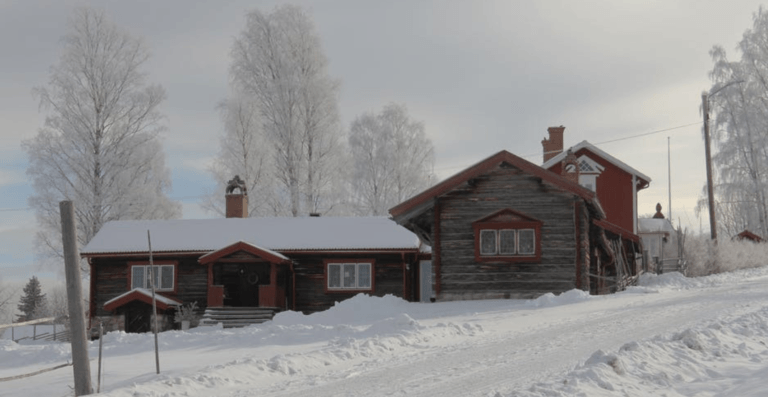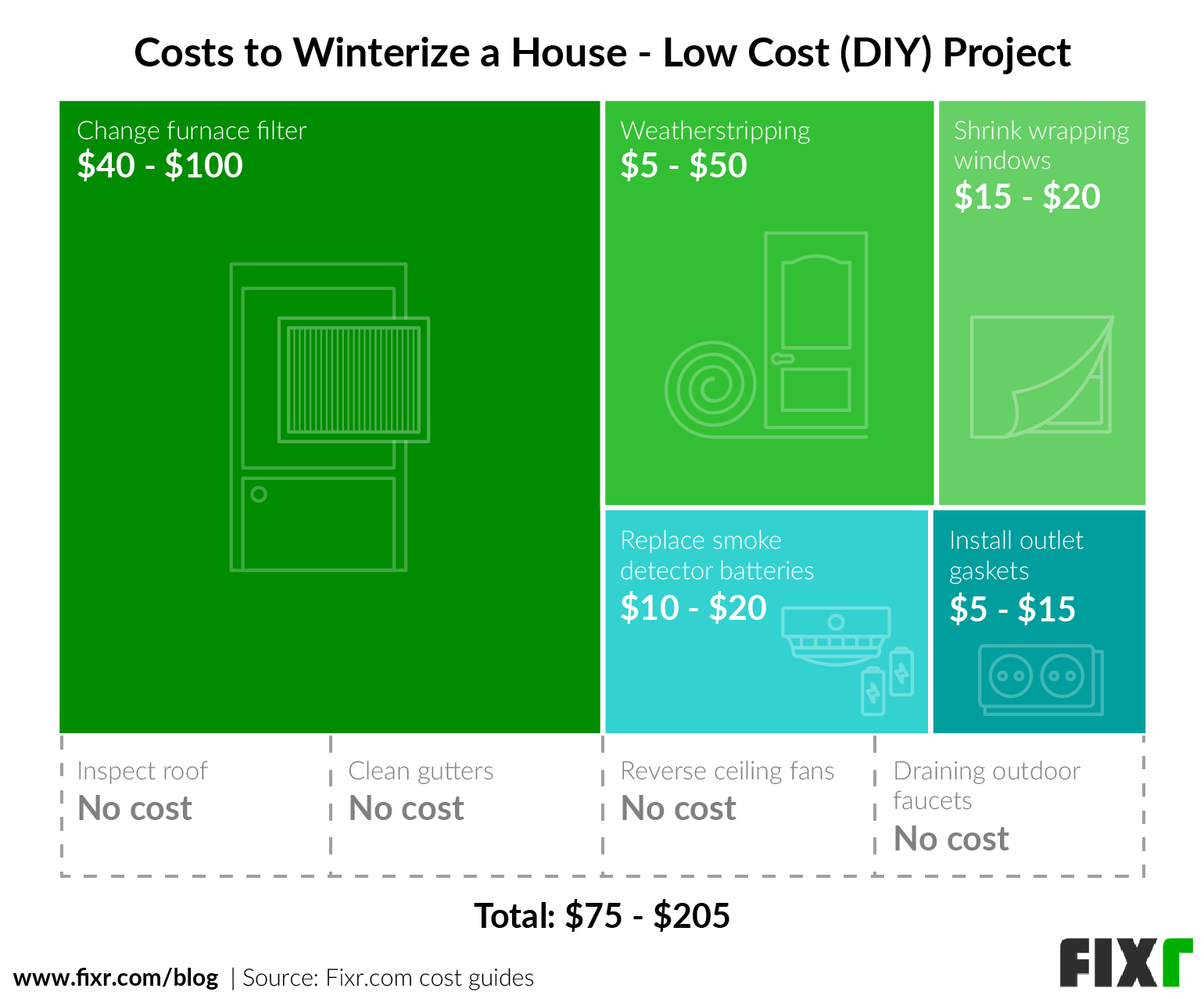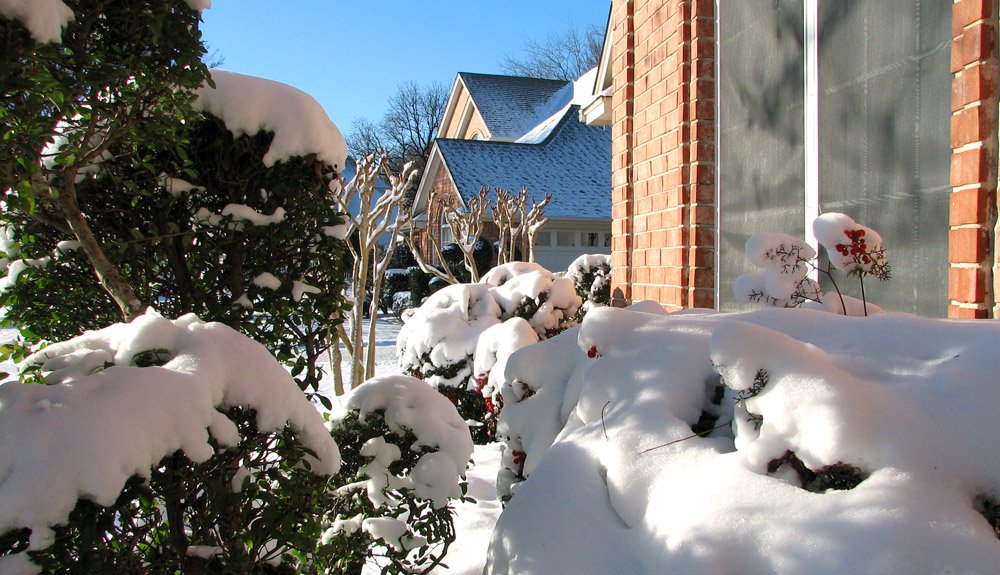Table Of Content

You may also want to consider purchasing steel doors, as high winds can tear through other types of material more easily. Prevent outside air from getting inside your home by installing door sweeps at the bottom of all exterior doors. They’re inexpensive, simple to put on and can keep dust and pests out, too. If your attic ventilation is poor, water vapor generated from bathing, cooking and cleaning can reach the cold underside of a roof deck and condense.
Unblock guttering and drains
If this isn’t properly addressed, moisture build-up could damage your roof deck, insulation and drywall. Learn which pipes are most at risk, and get tips on preventing frozen pipes. With this winterization article, you will be able to cover almost all the things which will help you to save your house from cold weather. In some circumstances, there will be things that are not easy to handle or you were lacking knowledge. If it happens then calling a professional plumber will be the right choice. After a heavy snowfall it is wise to ensure that you have cleared the snow from the parapet and valley gutters.
Protect Exterior Faucets
Burst pipes are one of the biggest risks of not having a properly winterized home. You can protect your home from damage from frozen pipes by insulating those that might be at risk of freezing. When the temperature drops significantly, make sure you regularly run a stream of water in a few of your faucets to minimize the risk of freezing and bursting pipes. Think of how experts recommend wearing breathable, thermal layers underneath your winter jacket. According to Michael DiMartino, SVP of project services at Power Home Remodeling, the same principle applies to your house. Gutters keep water moving away from your house, not pooling next to the foundation.
THE ROOF
From Heating To Hosting, These 33 Products Will Help You Winterize Your Home In Every Way - BuzzFeed
From Heating To Hosting, These 33 Products Will Help You Winterize Your Home In Every Way.
Posted: Sat, 09 Dec 2023 08:00:00 GMT [source]
Before the first frost, turn off the outside taps at the isolating valve. It is also worth knowing how to protect an outside faucet from freezing. This will also prove invaluable when it comes to winterizing a greenhouse. But the splendor of glistening snow and heavy-laden pines is quickly lost if your chimney smokes, ice dams cause your gutters to sag, or your heating bills go through the roof.
Just as you want to keep everything inside your home safe, you also want to protect your outdoor items, as well. "You'll need to bring plants and flowering trees inside before the first cold snap," says McCoy. Consider bringing more fragile plants indoors if you live in a colder climate, and remove any annuals you have planted. Put away any outdoor furniture you have, and clear out any fallen leaves so they don’t suffocate the lawn. Finally, store all your gardening tools for the season so they don’t rust or wear down before the spring. You may also want to pull out winter essentials like a snow blower to a more accessible place.
However, unless you’re familiar with attic insulation, you might want to seek out a professional for this task. If you’re looking to keep to a tight budget or enjoy home improvement tasks, you can clean the chimney yourself. However, it’s easier and safer to hire a chimney sweep or cleaning company to inspect and clear your chimney and fireplace. They’ll identify and clean out any creosote buildup, which can cause fires if not cleaned often. Having a professional sign-off on essential systems before cold weather hits is key to peace of mind. The list includes your furnace or boiler, chimney, insulation, and possibly your electrical panel, wiring, and outlets.
Home Insurance Discounts
If you find any of these gaps, it’s an indication that air can pass through the space, so you’ll need to seal the openings. As an example, you’re likely going to blast your home’s heat source in the winter, but your home should be prepared to retain the hot air. Walk around your house and look for obvious cracks or holes that allow entry to rodent pests. Check places such as around windows and doors, around the fireplace, at the foundation where it meets the ground, around the hot water tank or furnace pipes exiting the house, and dryer vents. It’s not always easy to see a small hole, but you may discover some obvious gaps that can be filled with caulking or foam spray.
Clean your gutters
Regularly changing your filters is also key for maintaining energy efficiency. Use energy-saver mode where available on your appliances, devices and electronics, and if you’re tempted to turn up the thermostat, consider bundling up with extra layers and blankets first. To keep them from freezing, be sure to completely remove and drain attached garden hoses and store them away for the winter. Another quick and easy winterization item to check off your list is replacing your HVAC filters. “Before your furnace kicks into high gear, install a new HVAC filter so that airflow is not obstructed by any lint or dust build up and can run as efficiently as possible,” Bidwell says. This can keep you more comfortable and help to keep your bill down as well.
Check your roof
This is particularly important if you live in a region where snow is likely. Cover patio furniture with weatherproof covers or, if possible, store it away in a garage or shed. If your deck is wooden, a fresh coat of sealant will protect it in wet weather.
Do you travel to warmer weather during the winter months but often worry about leaving for a long period of time? Read on for tips on protecting your main residence from potential problems so you can relax all season in that sunny vacation spot. Winterizing a home can be a DIY project, but like with many home improvement projects, a professional like a general contractor can do it more quickly and easily. If you decide to prepare your home for winter on your own, allow yourself plenty of time before the cold weather arrives. If you discover any issues that could pose a hazard to yourself or your property, you should call in a professional right away so that you aren’t left out in the cold in your own home this winter. To help avoid wind damage this winter, install wind-proofing features such as permanent window shutters and impact-resistant shingles.
If the gutters are not cleaned and are clogged even after the arrival of winter then it will result in overflow and will freeze the ground. To prevent this you can test the gutter and remove clogs messing up inside and install gutter heat tape. Keep the cold out of your home by checking for any cracks and holes in your foundation. Use caulk around windows and foam outlet protectors as a preventative measure. Additionally, implementing rubber or vinyl weather stripping around doors and windows can help insulate areas where cracks let cold air in—or heat is released out. "Replace your door seals, door sweeps, or thresholds to keep cold outside air from seeping into your home," says Cobb.

Ensure you wipe your window dry each morning to prevent moisture causing damage to paintwork or leaching into your metal or wooden window frames and causing rust or rot. When doing this, be sure you know how to clean windows without streaks. According to the Buildings Research Establishment, having an open chimney is comparable to leaving a window open all the time. To reduce the effects of this, consider investing in a removable chimney draft excluder, usually made out of felt or wool.

No comments:
Post a Comment